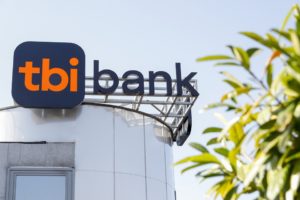Rising twin deficit causes concerns: Romania has a B2 medium risk for enterprise, says Euler Hermes

Euler Hermes, global leader in commercial credit insurance and a recognized specialist in collateral and debt collection, presents a study about the country risk of Romania, a country with a GDP of 240 billion USD, ranking 47, according to World Bank 2018 and a population of 19.5 million people.
Economic growth is forecast to moderate
Romania’s real GDP growth slowed down markedly from +7% in 2017 to +4.1% in 2018 as the previously overheating economy was cooling. Growth picked up again to +5% y/y in Q1 2019 but eased to +4.4% in Q2. The average +4.7% y/y in H1 2019 was mainly due to a strong rebound in investment growth (+11.4% y/y) after it had contracted by -3.2% in 2018, in part thanks to fiscal stimulus. However, inventories subtracted -1.1pp from H1 2019 growth, mainly due to heavy destocking in Q2. Both consumer and public spending were robust in H1 (both +6% y/y). Export growth slowed to +4.1% y/y in H1 (+4.7% in 2018) because demand from Western Europe has been weakening. As imports expanded by a solid +7.3%, net external demand subtracted -1.4pp from GDP growth in H1 2019.
Looking ahead, early indicators point to a slowdown of the Romanian economy in the next quarters. For example, output in the important automotive sector has been shrinking since June 2019. Moreover, we expect the new government of Prime Minister Ludovic Orban from the centrist National Liberal Party that took office in November 2019 to rein in fiscal spending, at least to some extent, which will also curb growth. Overall, against the backdrop of declining global demand, ongoing trade tensions and much reduced growth in the Eurozone – Romania’s key export destination – we forecast full-year GDP growth to come in at +4.2% in 2019 and to slow down to +2.8% in 2020.
Loose economic policies pose risks
Consumer price inflation jumped from an average annual 1.3% in 2017 to 4.6% in 2018, driven by surging wages, pro-cyclical fiscal stimulus and too loose monetary policies. In fact, the combination of these drivers and surging inflation were clear signs of an overheating of the economy that began in 2017. Even though growth cooled somewhat after 2017, the overheating indicators have not really disappeared. Meanwhile, after consumer price inflation moderated to 3.3% at end-2018, it rose again to an average 3.9% y/y in the first three quarters of 2019, and in seven out of nine months was above the 2.5% ± 1pp inflation target range of the National Bank of Romania (NBR, the central bank). Nonetheless, the NBR has kept its key policy interest rate stable at 2.5% since May 2018. Hence, real interest rates are negative, which, in principle, requires monetary tightening. That means monetary policy is still too loose.
Public finances have continued to deteriorate. Due to the strong pro-cyclical fiscal stimulus in recent years, the annual fiscal deficit widened rapidly from just -0.7% of GDP in 2015 to -3% in 2018. The deficit is likely to increase further to around -4% in 2019 as a result of delayed VAT refunds from 2018 and, especially, of substantial pension increases (+15% in 2019, +40% in 2020 were announced by the previous government that collapsed in October 2019). The IMF has calculated that these pension hikes, unless the government implements offsetting policy measures, could double Romania’s fiscal and current account deficits to around -8% of GDP and make public debt rise by 20pp of GDP (from currently about 36%) by 2022.
Prime Minister Orban has announced an intention to roll back some of the fiscal measures implemented under his predecessor, for which Romania had been criticized by the EU and concerned investors. However, reigning in expansionary fiscal policies will not be easy until the next parliamentary elections, scheduled for end-2020, as Orban’s minority government will need support from opposition MPs to push through bills. And revoking announced pension increases may prove difficult in an election year. Hence, the current situation indicates a certain risk of further ad-hoc budget changes throughout 2020 and a reduced scope for long-term budget planning prior to the elections. As a result, the fiscal deficit may also reach about -4% of GDP in 2020.
Rising external imbalances could put pressure on the leu
The annual current account deficit has widened from -0.7% of GDP in 2014 to -4.6% in 2018, and more than -5% in H1 2019. Crucially, only 45% of that shortfall in H1 2019 was financed through net foreign direct investment (FDI) inflows, well below a comfortable level of 75% and down from a recent high of 146% in 2016. We expect the current account deficit to remain large in the next few years. Combined with the projected rise in the fiscal deficit, this could raise external financing needs to excessive levels. It could also reverse the downtrend in the external-debt-to-GDP ratio from 75% of GDP in 2012 to 49% in 2018 – we forecast a ratio of 51% in 2020.
The exchange rate of the leu (RON) has been fairly stable in recent years, despite the overheating of the economy. The RON has depreciated between -1% and -2% on average p.a. vs. the EUR. This is an adequate performance for an emerging market. However, the NBR has applied a range of tools to intervene in order to prevent excessive currency volatility – not surprising as the official exchange rate regime is that of a managed float. Meanwhile, the NBR’s foreign exchange (FX) reserves have broadly moved sideward since 2016 in the range of 31-36 billion EUR (35.6 billion EUR in August 2019). But that means that the FX coverage of imports has fallen from a healthy 5.7 months at end-2015 to four months in mid-2019. A further decline of that ratio could raise concerns among investors, in particular against the background of the rising twin deficits, expansionary fiscal policy, elevated inflation and the weakening global economic outlook. It is not our central scenario, but it cannot be ruled out entirely that a shift in investor sentiment, a considerable decrease in export demand, as well as domestic policy shocks, could at some point result in capital outflows and cause a sudden stop to economic growth. It remains to be seen if the new Romanian government takes bold enough steps to improve investor confidence.
Romania has a few strengths, such as:
- EU membership and fairly good international relations
- Low public debt
- Competitive industrial sector
- Adequate business environment
But also weaknesses, for example:
- Government instability
- Arrears of state-owned enterprises
- Excessive, pro-cyclical fiscal stimulus since 2015
- Banking sector vulnerabilities
- High private-sector debt (notably in foreign currency)
- Rapidly rising current account deficit, while net FDI inflows are declining
- High external debt burden















